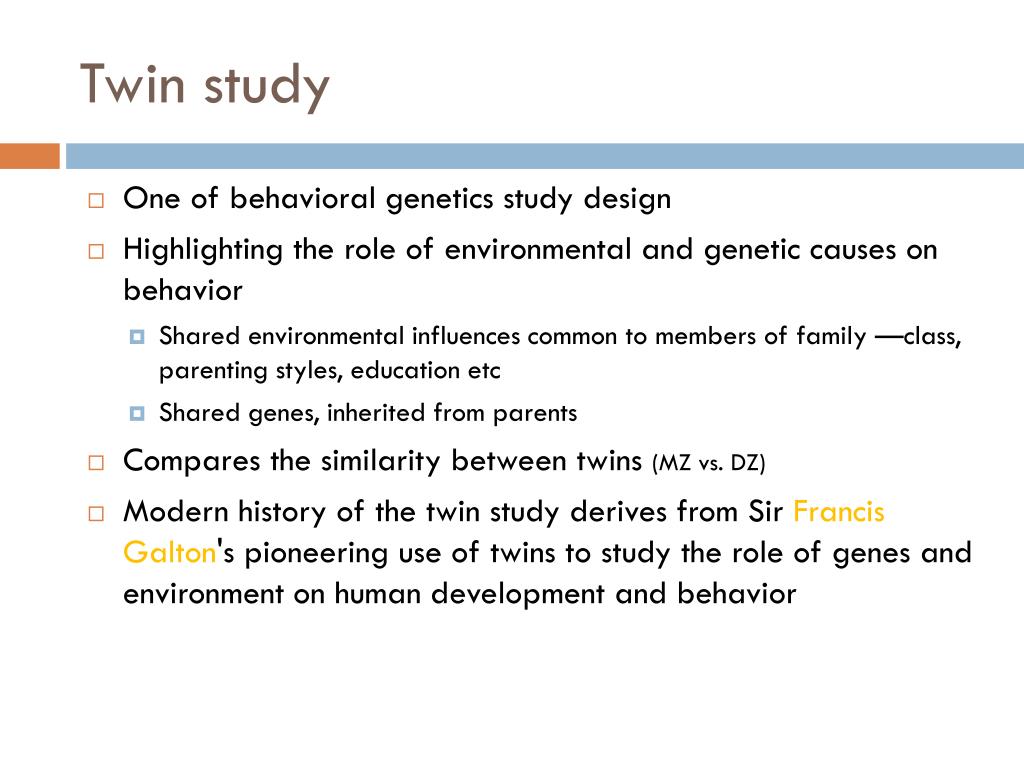

“Twin studies matter because we need to understand what influences our development. From there, they can search for any associated genes. For example, if identical twins are both more likely to suffer from high or low cholesterol levels than fraternal twins, researchers can conclude that genes play an important role in the development of that trait. This difference enables scientists to explore how heredity contributes to illness and behavior. Identical twins possess the same set of genes entirely, while fraternal twins share about half of the same genes, on average - similar to siblings who didn’t share a womb. Twin studies compare two different types of twins: identical and fraternal.

Twin studies matter because we need to understand what influences our development. The TwinsUK Registry, which launched a database for studying arthritis, includes more than 14,000 twins, aged 16 to 100 years, from across the United Kingdom. The largest twin registry in the world, researchers have employed it to make important discoveries associated with cardiovascular disease, cancer, and aging. Founded in 1959, the Swedish Twin Registry at the Karolinska Institute in Stockholm contains information on 194,000 twins born since 1886. Data from twin registries around the world help researchers answer a host of questions. Galton’s contribution to twin studies, however, remains to this day and has spawned an important field of study. Perhaps well-intentioned, the science lacked rigor and the philosophy was used to propagate concepts of racial and class superiority. Galton ultimately determined that “there is no escape from the conclusion that nature prevails enormously over nurture.” His resolute belief in the importance of heredity led him in 1883 to invent the term “ eugenics” - a set of beliefs and practices aimed at increasing “desirable” human traits while decreasing “undesirable” ones. Galton was trying to sort out whether a person’s nature, or genetics, played a greater role in who they became than the nurturing, or environment, they experienced. In it, he asked if the twins became more or less similar as they aged, irrespective of whether they were raised together or apart. In “The History of Twins”, Galton reported on the results of a questionnaire he’d given to families of twins. In 1875, before scientists understood why some sets of twins appeared more similar than others, Sir Francis Galton - a scientist, statistician, and half-cousin of Charles Darwin - published the first twin study. Segal, a fraternal twin herself, turned her lifelong fascination in the marked differences between herself and her sister, now a lawyer, into a career exploring how genetics and environment intertwine to create each human’s experience. Segal, director and founder of the Twin Studies Center at California State University, Fullerton. They feel like they really have something to contribute,” says Nancy L. “Most twins love being in research, particularly identical twins. And, the value of that research is only increasing. While Scott and Mark Kelly may represent the most exotic comparison between twins to date, for over a century twins have been helping researchers understand how our genes and environment influence our susceptibility to disease. And his twin, Mark Kelly, is a former astronaut who spent those same 340 days on Earth, providing a perfect comparison for how the body handles space. NASA knows this because Scott Kelly is a twin. But his body mostly returned to normal after his return from space. Kelly’s time in space changed the shape of his eyes, altered his gut bacteria, placed his immune system on high alert, and shifted the activity of his genes, among other things. That’s the conclusion NASA came to after Scott Kelly returned from 340 days aboard the International Space Station. Space travel changes the human body, but not so permanently that it can’t withstand long trips in space.


 0 kommentar(er)
0 kommentar(er)
